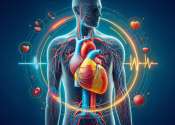Lower 'bad' cholesterol and higher fat-transport markers linked to less Alzheimer's risk
People who are at higher risk for heart disease also seem more likely to develop dementia. And research led by The University of Texas Health Science Center at San Antonio (UT Health San Antonio) has discovered new associations ...
4 hours ago
0
43









